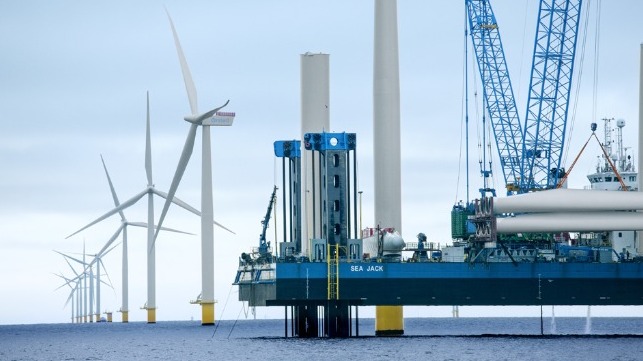ABS: Offshore Wind Could Power the Hydrogen Economy

Offshore wind farms have the potential to become future production hubs for green hydrogen, a development that could be accelerated by the maritime industry embracing the clean fuel due to declining prices, the American Bureau of Shipping (ABS) has said.
In a new whitepaper, the classification body says that incorporating the production of green hydrogen in offshore wind farms is feasible with the expected rise in demand over the next decade. Production of green hydrogen requires a renewable energy source to provide the input power into the electrolyzer system and any other equipment used in the process. In the case of offshore hydrogen production, the simplest source of renewable energy will come from offshore wind turbines, alongside other energy sources like tidal, wave and solar energy harvesters.
ABS is already working with Hyundai Heavy Industries and Korea Shipbuilding and Offshore Engineering to jointly develop technical guidance for green hydrogen production from offshore platforms. The guidance is a key first step to the design and construction of a facility by 2025 and will facilitate the development of production facilities providing a vital contribution to the growth of a global green hydrogen economy.
There are several large offshore green hydrogen production projects proposed so far, all based around offshore wind farms. These include the NortH2 Project located off the Dutch coast, which will have a capacity of 4 GW of green hydrogen from offshore wind by 2030 and over 10 GW by 2040. The AquaVentus project in Germany would see 10 GW of offshore wind energy being used to generate green hydrogen by 2035.
“The idea of storing energy as hydrogen is one of the reasons why green hydrogen is increasingly seen as crucial to maximizing the efficiency of renewable energy sources and is a potential game changer for the marine and offshore industries,” said Gareth Burton, ABS Vice President, Technology.
According to the whitepaper, although the price of green hydrogen is currently high, the costs are projected to decline over the next 10 years. The price of green hydrogen in April last year ranged between $3 and $6.55 per kilo, making it comparatively expensive in the current market relative to hydrogen produced via blue or brown/grey processes, which cost between $1.30 and $2.90 per kilo and $0.70 and $2.20 per kilo respectively.
As the technology and infrastructure develops, by 2030 green hydrogen is expected to drop in price to around $2 per kilo in most regions, with lows of $1 per kilo in especially favorable regions - particularly China, the United Kingdom, Germany, the Netherlands and Belgium, which are investing heavily in offshore wind.
The whitepaper shows that in 2019, the global consumption of hydrogen fuel reached approximately 75 million tonnes although only 1.5 million tonnes were green hydrogen.
Demand for hydrogen is expected to increase at a rate of 7-9 percent annually, leading to an estimated demand of between 500 and 800 million tonnes of hydrogen by 2050. This would fulfill between 15 and 20 percent of the global energy demand.
To reach a production level of 500 million tonnes of hydrogen by 2050, there will need to be 3,000 to 6,000 GW of newly installed renewable energy sources devoted to hydrogen production.
